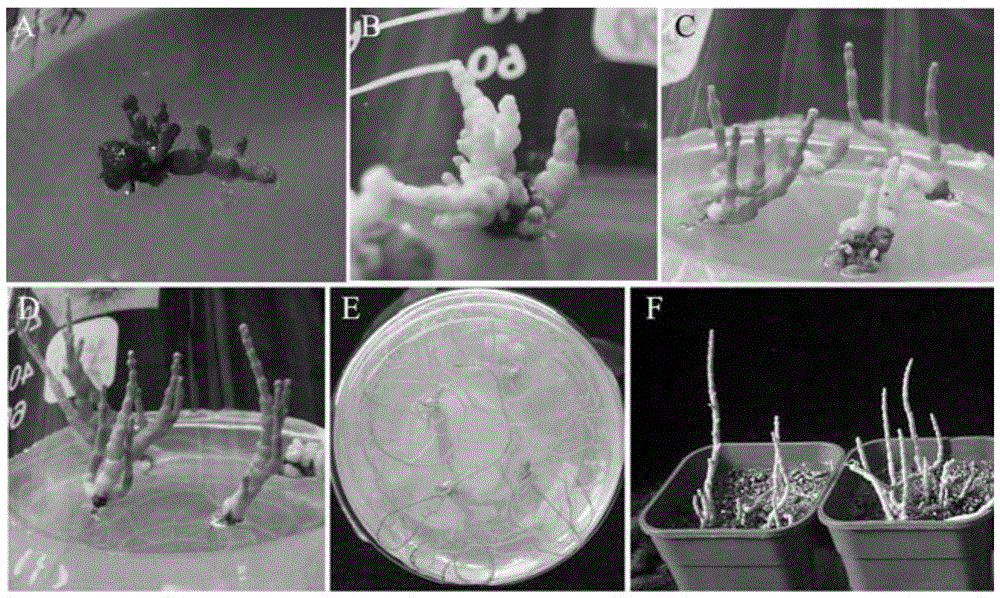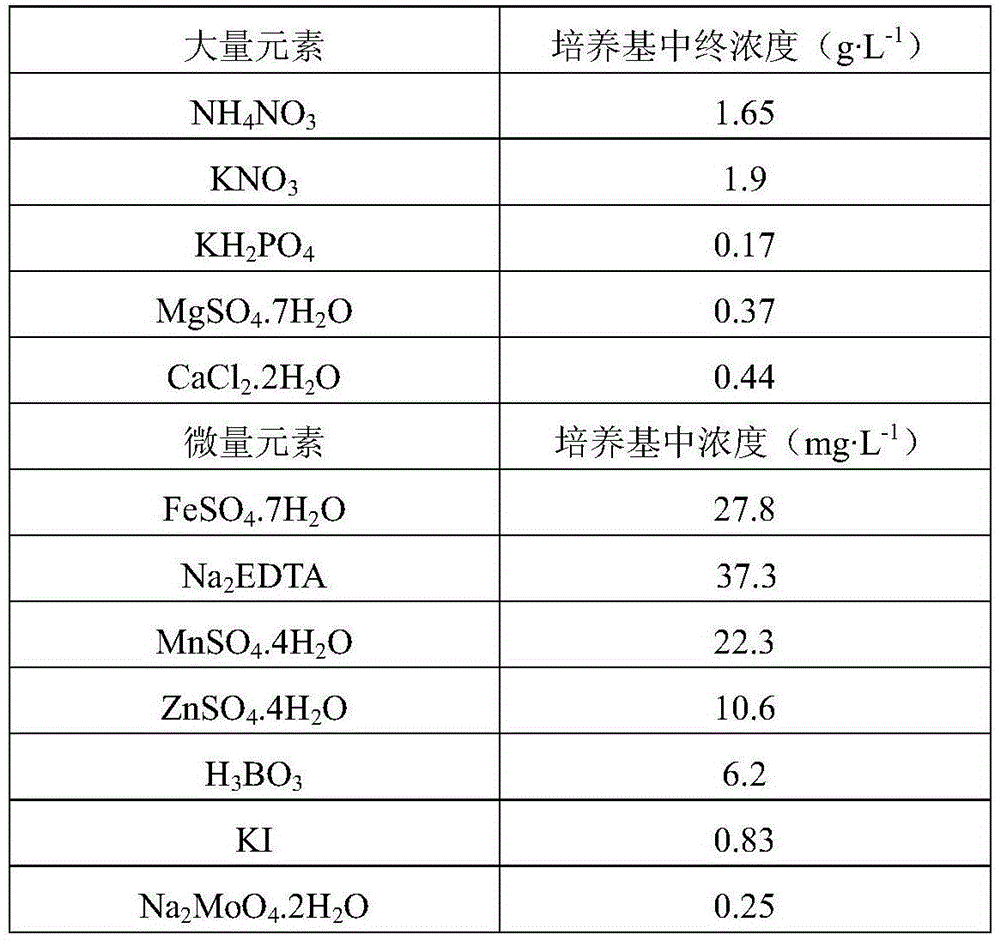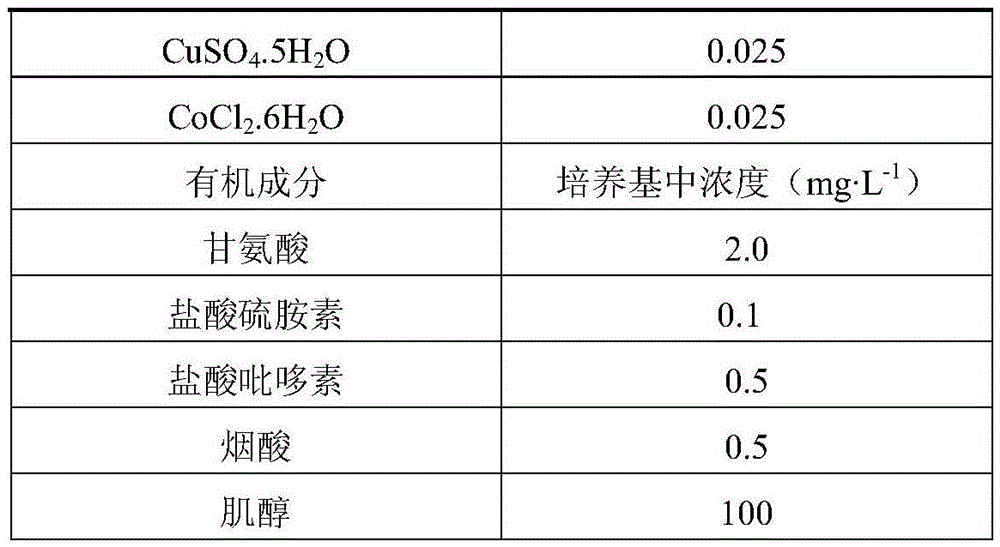Propagation method for halocnemum strobilaceum
A technology of salt-knotted wood and assimilated branches, which is applied in the biological field and can solve the problems of difficult management of seedlings, long germination time, small seeds, etc.
- Summary
- Abstract
- Description
- Claims
- Application Information
AI Technical Summary
Problems solved by technology
Method used
Image
Examples
Embodiment 1
[0048] Embodiment 1, the propagation of salt knot wood
[0049] 1. Seed germination of Saltwood
[0050] Inoculate the seeds of S. chinensis after routine disinfection (70% ethanol disinfection for 1 minute with 0.1% mercuric chloride for 8-10 minutes) in the germination medium and germinate and cultivate them for 4-5 months, and germinate and cultivate them every month. The resulting seedlings were transferred to fresh germination medium to obtain seedlings.
[0051] The formula of the above-mentioned germination medium is as follows: mix NaCl, sucrose, agar and MS liquid medium to obtain a germination medium, wherein the concentrations of NaCl, sucrose and agar are respectively 200mmol L -1 , 20g·L -1 , 8g·L -1 , pH value is 5.8.
[0052] The conditions for the above germination culture were temperature at 25°C and light intensity at 120 μmol·m -2 ·s -1 , light time 12h·d -1 .
[0053] 2. Induction culture of assimilated branch axillary buds
[0054] The 0.5 cm long a...
PUM
| Property | Measurement | Unit |
|---|---|---|
| Concentration | aaaaa | aaaaa |
| Length | aaaaa | aaaaa |
| Length | aaaaa | aaaaa |
Abstract
Description
Claims
Application Information
 Login to View More
Login to View More - R&D
- Intellectual Property
- Life Sciences
- Materials
- Tech Scout
- Unparalleled Data Quality
- Higher Quality Content
- 60% Fewer Hallucinations
Browse by: Latest US Patents, China's latest patents, Technical Efficacy Thesaurus, Application Domain, Technology Topic, Popular Technical Reports.
© 2025 PatSnap. All rights reserved.Legal|Privacy policy|Modern Slavery Act Transparency Statement|Sitemap|About US| Contact US: help@patsnap.com



